Sewage, Squatters, Disease: U.S. Military Barracks Are Depressing Hellholes, Watchdog Finds
Washington watchdogs investigated the life of the average enlisted soldier in the U.S. military and uncovered barracks filled with sewage, broken AC systems, mold, broken windows, and crime.
In a report titled Poor Living Conditions Undermine Quality of Life and Readiness," the Government Accountability Office-a non-partisan group of investigators who report to Congress-detailed the squalid living conditions of the U.S. military. The report is shocking and filled with pictures of broken windows, busted A.C. units, black mold, and raw sewage. Interviews with military rank and file and officers detailed the poor conditions. In one tragic instance, military members were tasked with cleaning up a room after a troop died by suicide.
 DoD and GAO photos.
DoD and GAO photos. The report is full of pictures and grim details. The GAO visited 10 different military installations in varied climates across the continental United States that were occupied by every branch of the military. It visited bases in California, Colorado, Texas, and D.C., and conducted 12 sets of interviews with groups of troops living in the barracks in addition to reviewing the Pentagon's own records about the facilities.
The problems were numerous and frequently grotesque. At one installation, we noticed a bad odor throughout the barracks. Installation officials told us the smell was methane gas leaking out of aging plumbing with sewage pipes that routinely crack and require replacement," the report said. These officials acknowledged that exposure to methane gas is a health risk."
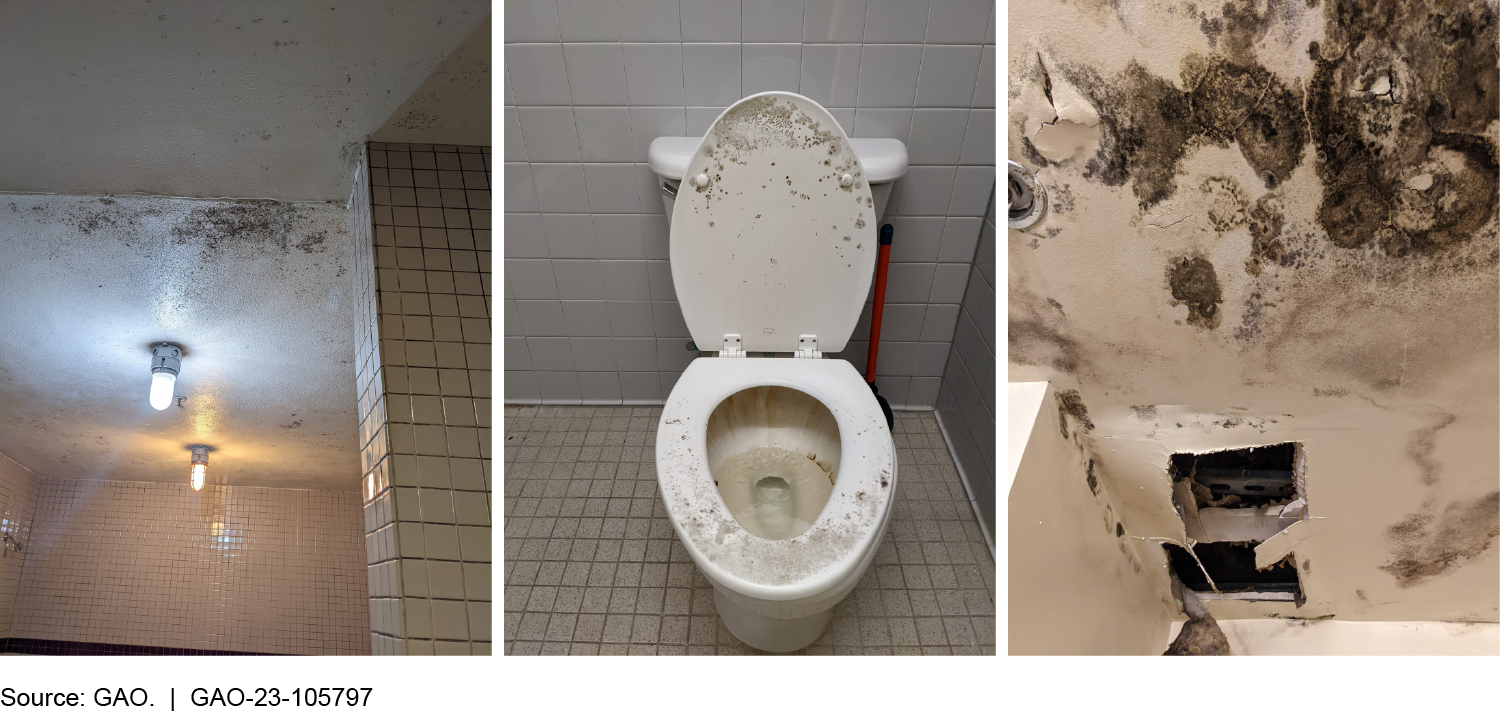 GAO photos.
GAO photos. Another installation the GAO visited in 2022 had recently closed its barracks due to an outbreak of Legionnaires' Disease, a kind of pneumonia. Officials told us that only barracks housing health care patients, and thus subject to Joint Commission health standards, undergo water testing that would reveal legionella," the report said. They also said they do not test other barracks to ensure similar levels of water quality and safety because they are not required to do so."
In some barracks, sewage repeatedly overflowed into the bathrooms and had to be constantly fought back by the troops. Barracks managers at multiple installations told us they have had to organize working days for service members to repaint external or internal walls, replace ceiling tiles, or clean up significant sewage overflow," the report said.
Mold was rampant in five of the installations they GAO visited. Service members in all 12 discussion groups told us they considered mold to be a problem in barracks," the report said. Another service member told us about experiencing respiratory issues attributed to the presence of mold in their barracks. After three visits to the emergency room, the service member was moved to a different barracks without mold and the medical issues were resolved."
In some of the buildings, the fire suppression systems didn't work. Photographs of the barracks showed a rusted box meant to house a fire extinguisher standing empty. Fire system in building 323 is completely non-operational until further notice," a note on the wall of another barracks said. Please call 911 for any fire related emergencies."
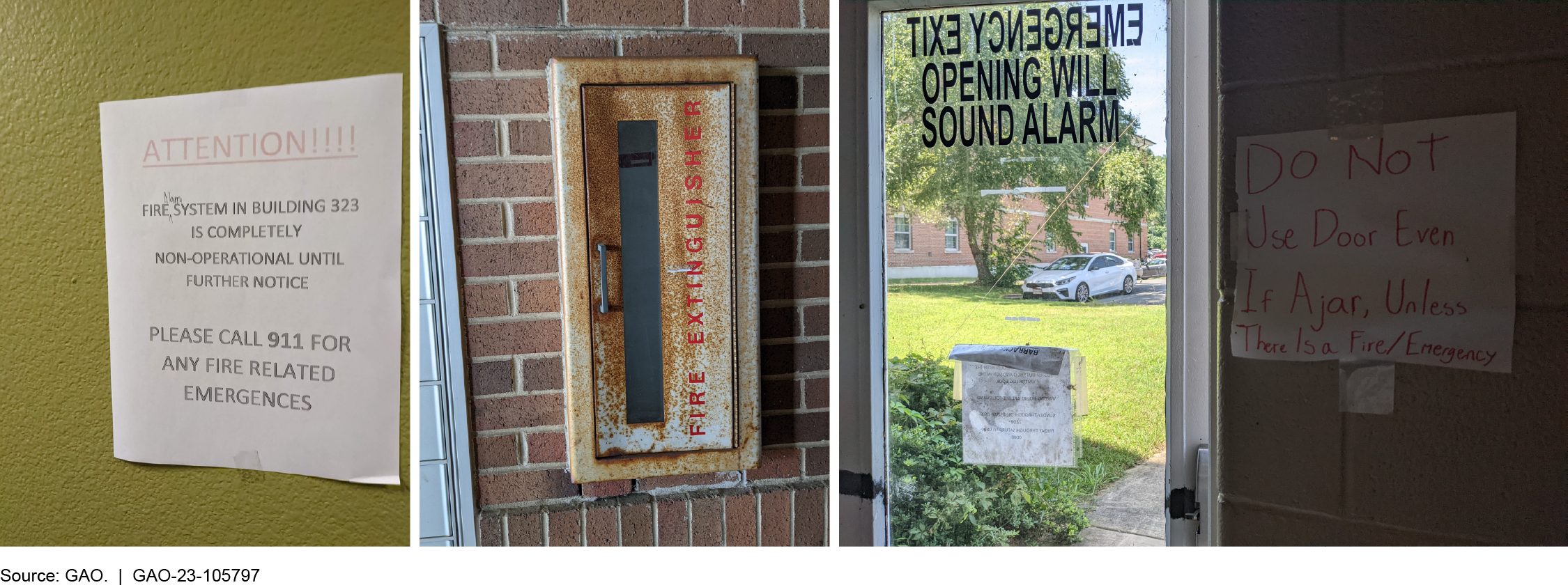 GAO photos.
GAO photos. The report notes that security was a constant issue, putting troops in danger. Windows and locks were found to be broken and never replaced, and security cameras and lights didn't work. First sergeants at one installation told us an ex-spouse broke in and physically assaulted a service member in the barracks and that poorly lit hallways, blind spots in hallways and corridors, and lack of security cameras made barracks difficult to monitor," the report said.
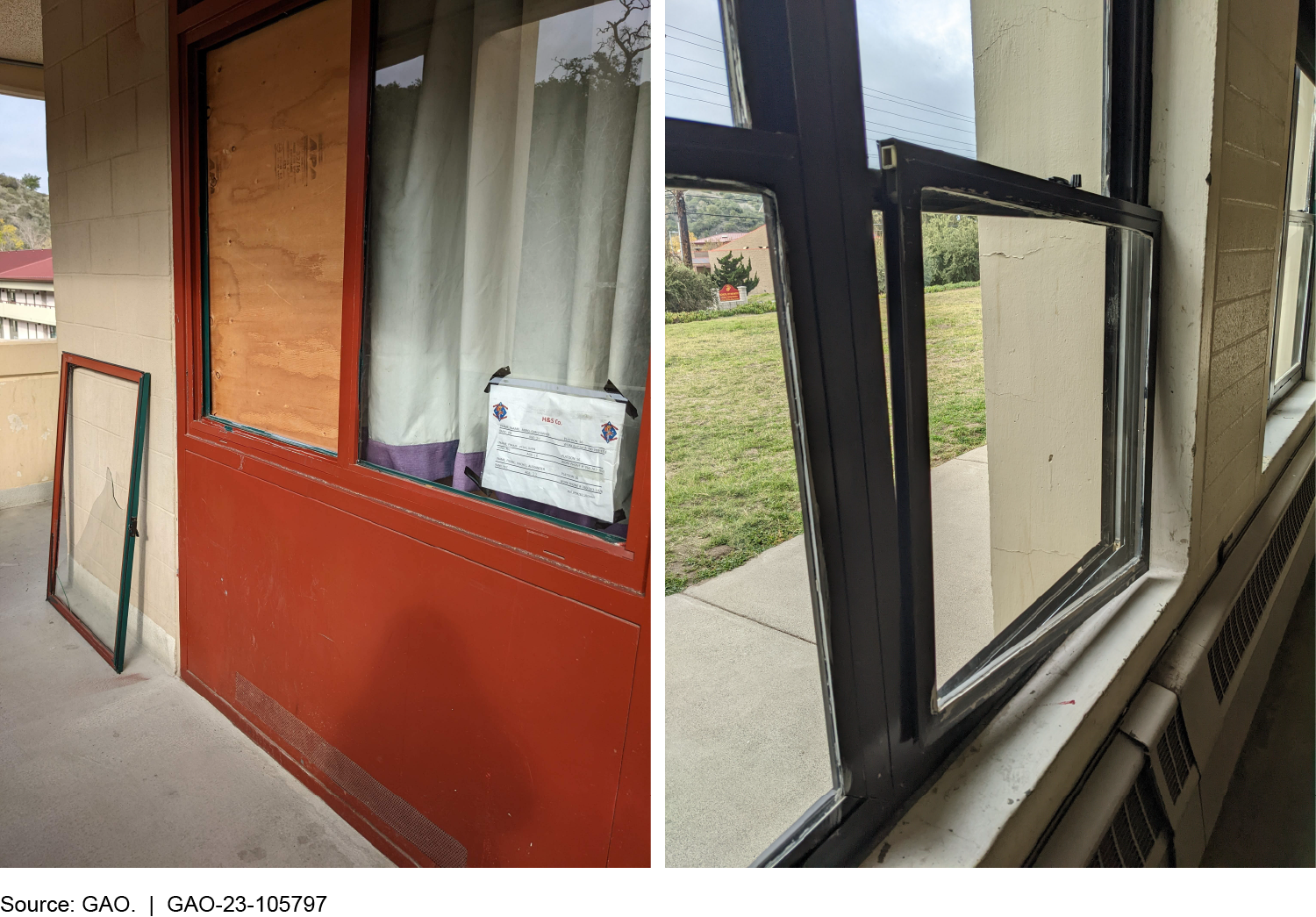 GAO photos.
GAO photos. At one facility, the military was constantly chasing squatters out of the barracks. Investigators literally stumbled into a room with one of the squatters during their tour, who was a former member of the military who'd been discharged but had continued to live in the barracks.
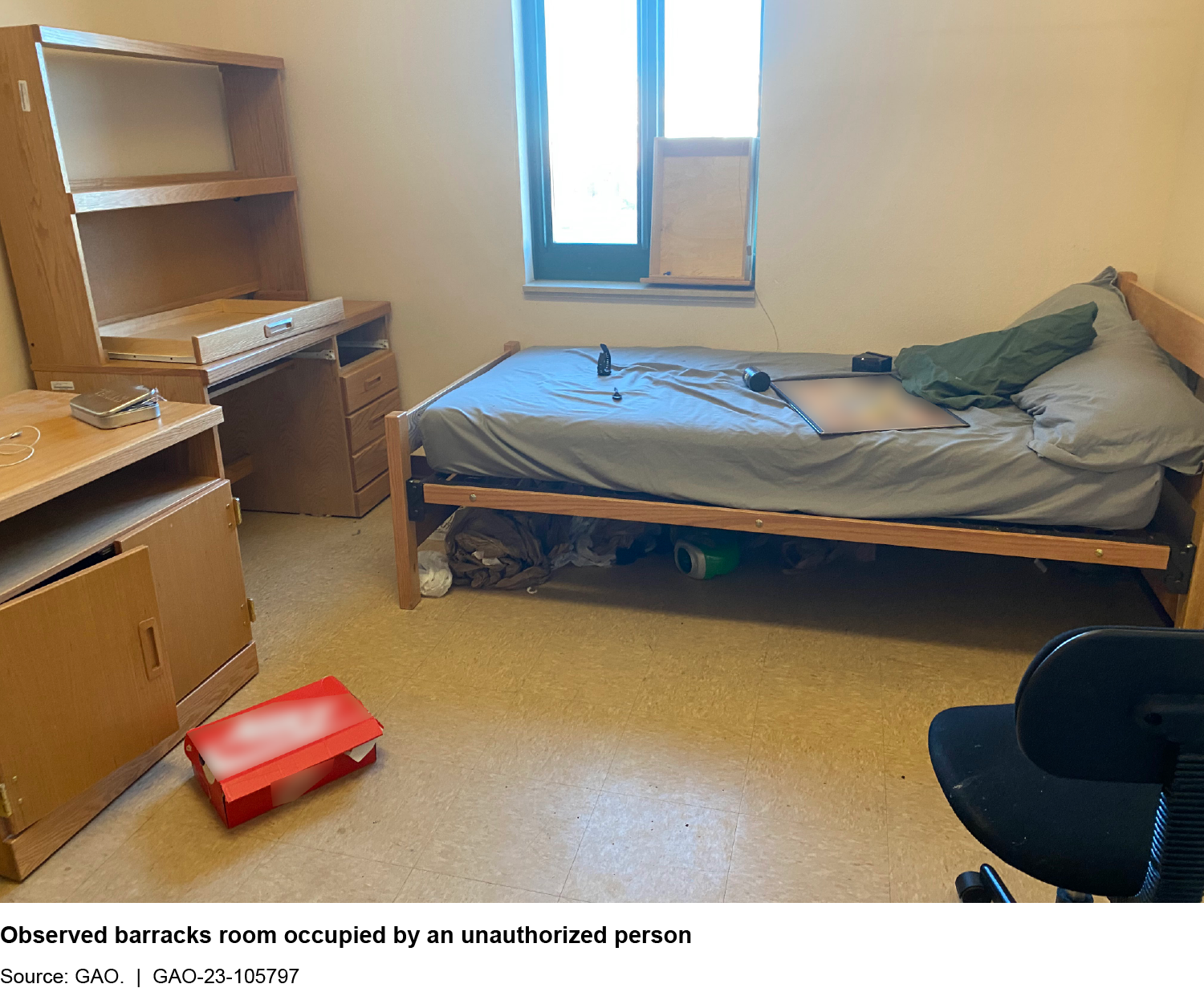 GAO photo.
GAO photo. In three of 12 discussion groups, service members said they were concerned about the risk of sexual assault for those living in barracks," the report said. This finding reflects the U.S. military's well-documented sexual assault problem. According to the Pentagon's own records, about one-third of all reported incidents of sexual assault happened in on-base housing.
The poor living conditions contributed to an air of despair in the barracks, the report said, contributing to substance abuse and even suicidal ideation.
A service member said it was depressing to come home to a dark box after work," the report said. Service members in three of 12 discussion groups told us barracks conditions contributed to substance abuse. For example, service members in one discussion group said that a barracks resident was recently hospitalized due to a drug overdose. They added that they believe poor living conditions can contribute to increased suicide rates for barracks residents. Overall, service members or first sergeants at three installations brought up concerns about suicide ideation."
Officials at one installation told us service members are responsible for cleaning biological waste that may remain in a barracks room after a suicide," the report said.
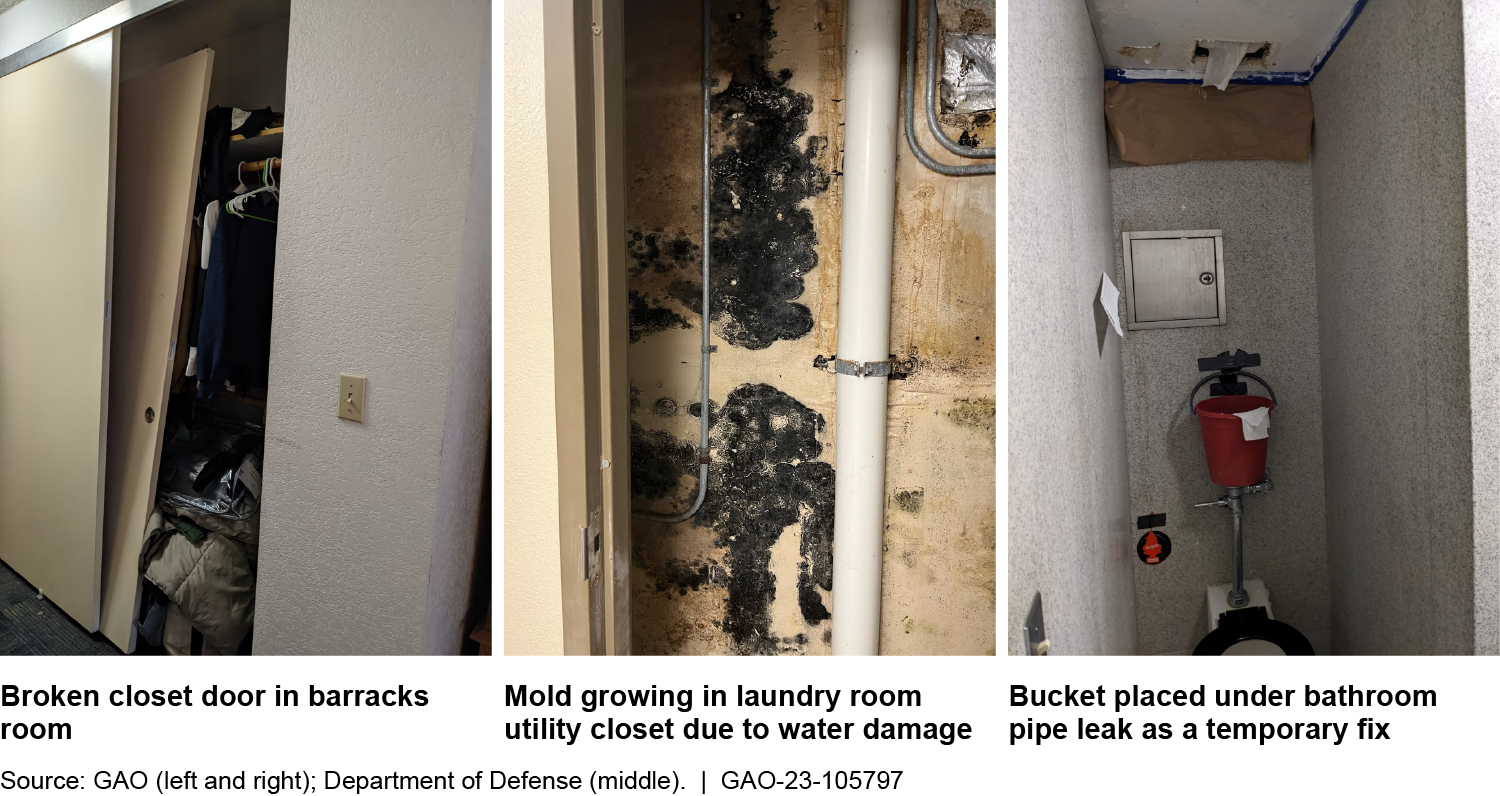 DoD and GAO photos.
DoD and GAO photos. It's not that the Pentagon doesn't have enough cash to pay for housing-its 2024 budget is $831 billion. The problem is that it has no idea where the money goes, or how it's spent. Washington has tried to audit the DoD for years and has failed every time. The military housing problem is another example of the Pentagon not understanding how it spends money.
DoD requested about $15 billion for overall facility sustainment for fiscal year 2024 but could not identify how much of this total would be spent toward barracks," the report said. In addition, DoD did not know how much it spent on housing allowances for service members who would normally be required to live in barracks, but did not because of insufficient space or poor living conditions."
The GAO report also revealed that the Pentagon doesn't have any mechanism by which to reliably figure out what's going on in the barracks. DoD does not track information on the condition of barracks or facilitate collaboration on initiatives to improve barracks," the report said.
The Pentagon is having a hard time recruiting and keeping soldiers. The U.S. Air Force, Navy, and Army are all facing recruiting shortfalls. It's an all-volunteer force, and many young Americans find the prospect of joining the military a tough sell right now. It's a safe bet that dirty, dangerous, and squalid living conditions aren't helping.